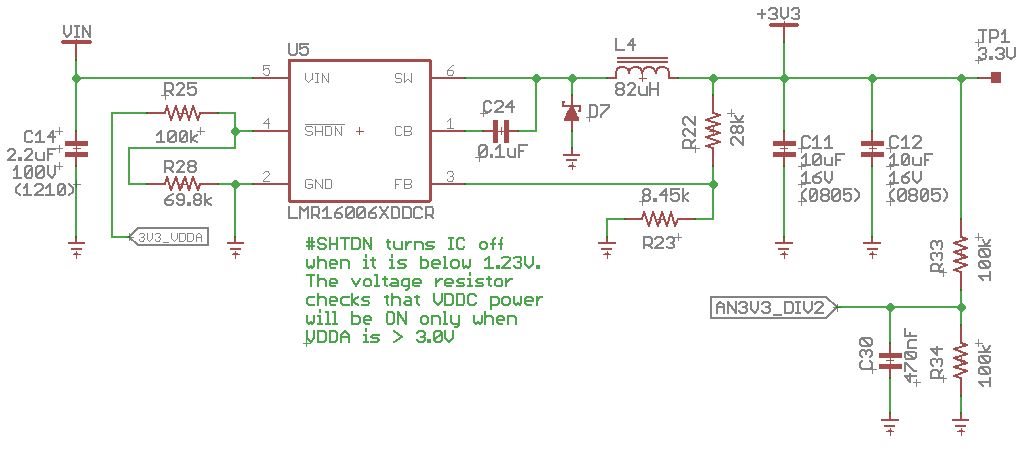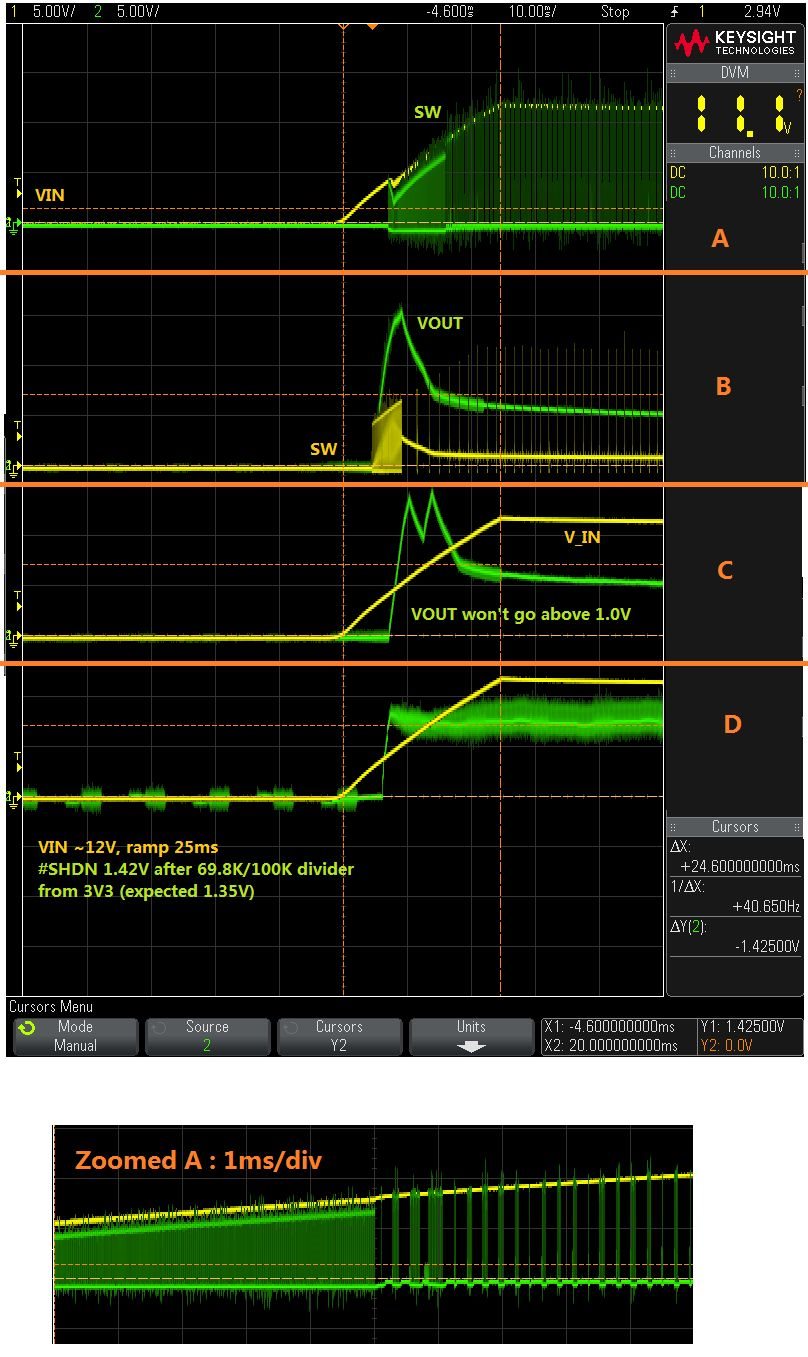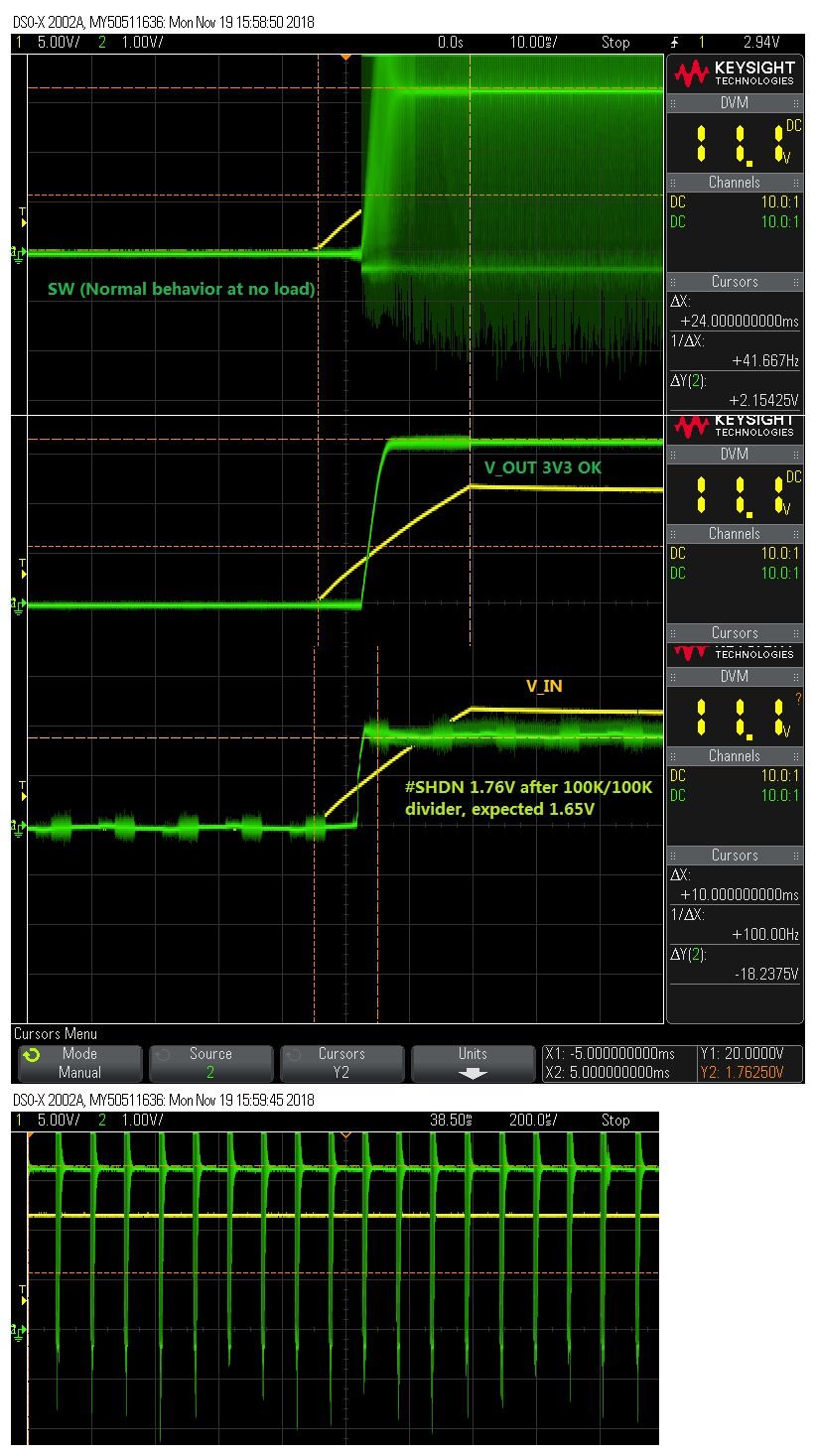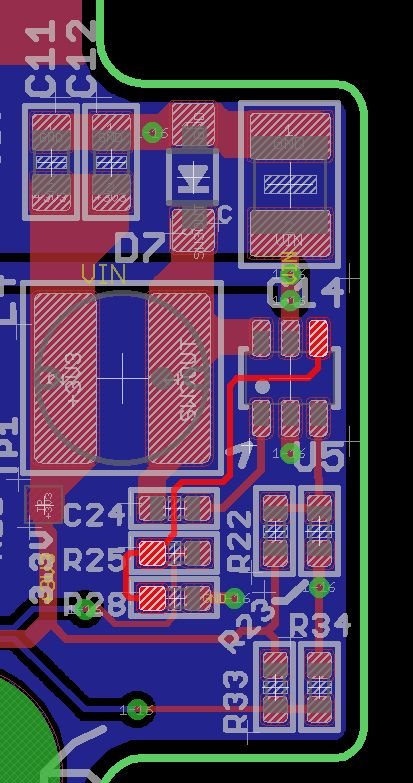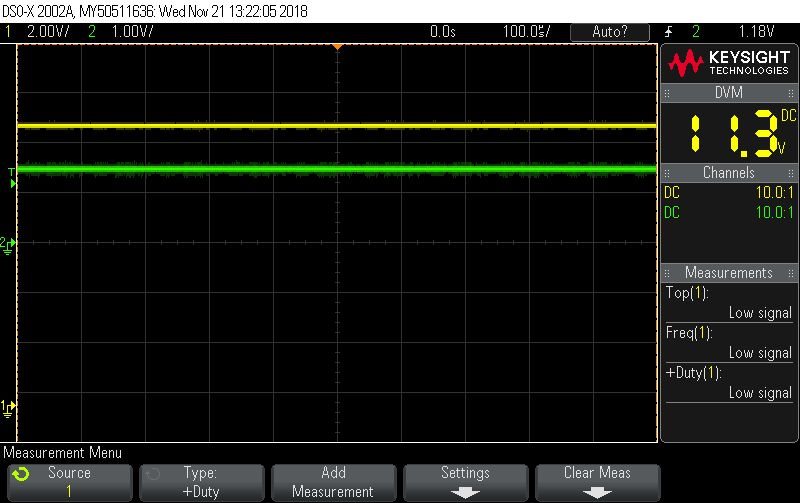Hello all,
We have a LMR16006X circuit that was sent back to me for review, for the first 3 test boards won't start. This is a known device for us, we have some 8 different products using that part, the schematic is based on Webench and board layout was submitted here before, approved and follows all the guidelines.
I'm at a loss here, for I can't figure it out. The switcher should be enabled by a resistor divider (an exact solution that works with other boards we made before), to turn it on when #SHDN gets above 1.25V. At 1.35V it still won't start. Here are some details if someone can help:
FIRST, SOME MEASUREMENTS ON THE PCB PADS WITHOUT THE IC:
- #SHDN is behind a 100K/69.8K resistor divider, to prevent IC to starting before we get ~3.0V of an external 3.3V circuit. That is properly calculated for 3.0 * 0.411 = 1.23V, and we are correctly reading 1.35V into pin#4
- VIN is set at 12.0V
- All other pins read 0V (GND, FB, CB and SW).
- No noticeable shorts anywhere on the load side of the board, caps good, resistors good.
Now, when soldering the IC (fresh IC right out of the tape, marking D02X):
- #SHDN raises: instead of the expected 1.35V, it becomes 1.55V (AS IF SOMETHING INSIDE THE IC IS BRINGING THIS VOLTAGE UP)
- Output voltage (SW) is 1.72V (should have been 3.3V, adjusted by the 28K/8.45K FB divider).
- VIN remains at 12.0V
- FB Reads 0.4V (correct division of wrong output voltage 1.72V * 0.232)
SW output signal is a ~635Hz quick pulse that outputs VIN during ~500ns, a if "not able to start"... (I can capture a scope if useful)
NOTE: If I increase #SHDN voltage a bit higher, by pulling it up (via 2K2 resistor) from an external 3V or from 12V VIN feed, part works properly!
Is there any chance of a bad IC batch, or any similar known occurrence? We tried LMR16006X's from two different shipments, although both are from the same vendor and bought in a short time from each other... Three full boards were tested and failed, and I'm now working on a board with the very minimum components to check the issue, tried 3 switchers already with identical results.
Any help or guidance for further tests are really appreciated!
Regards
Bruno


